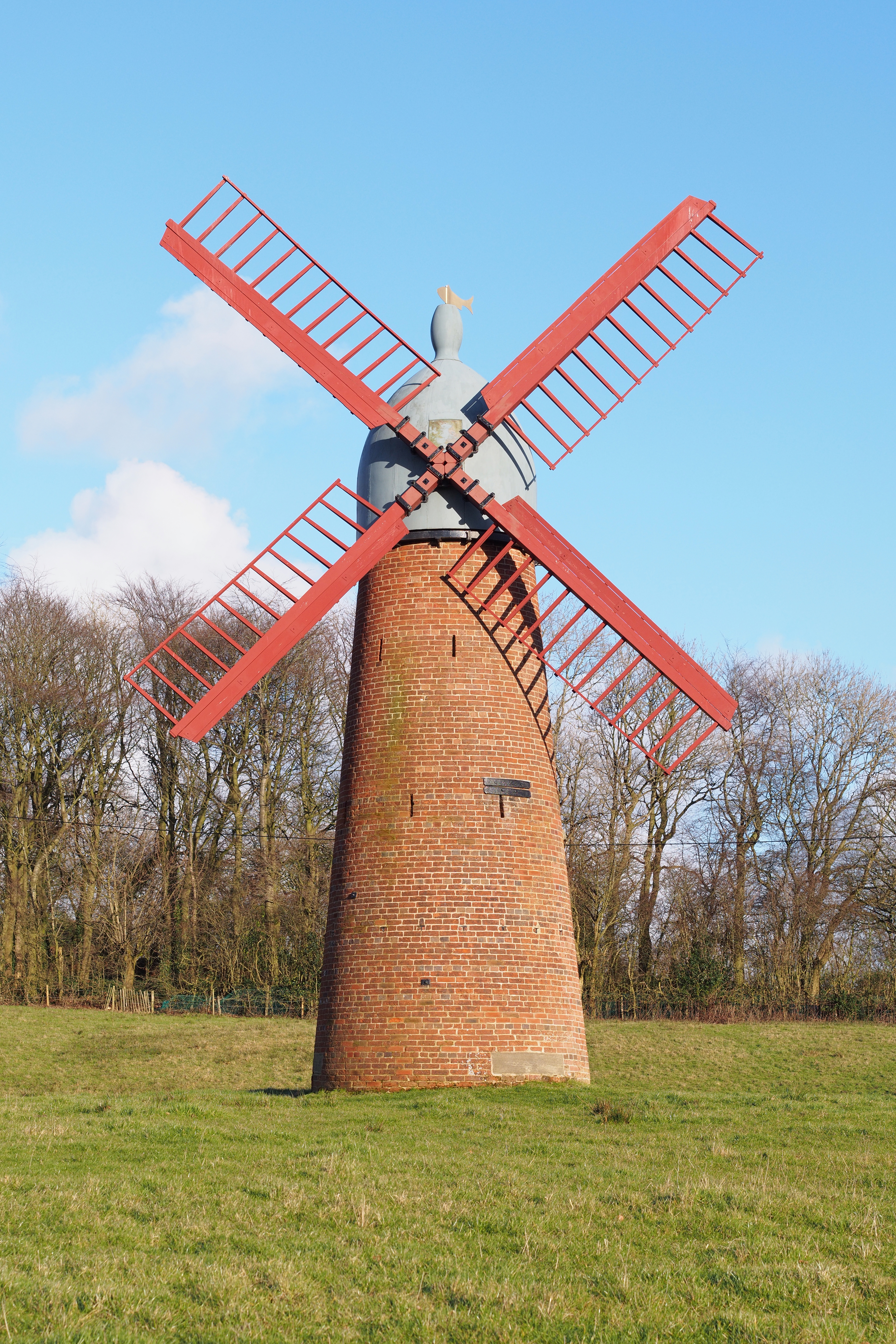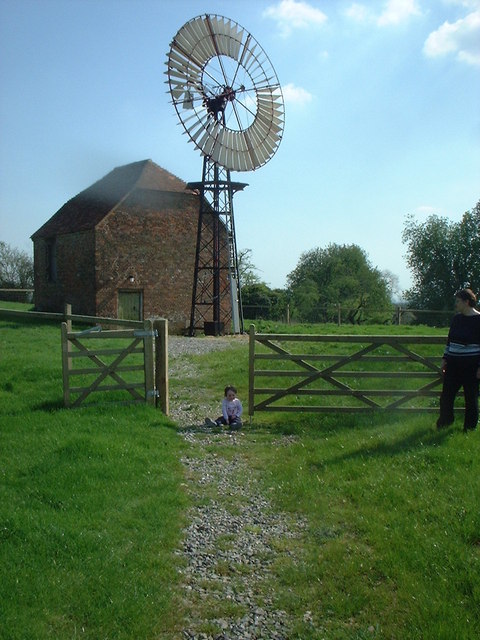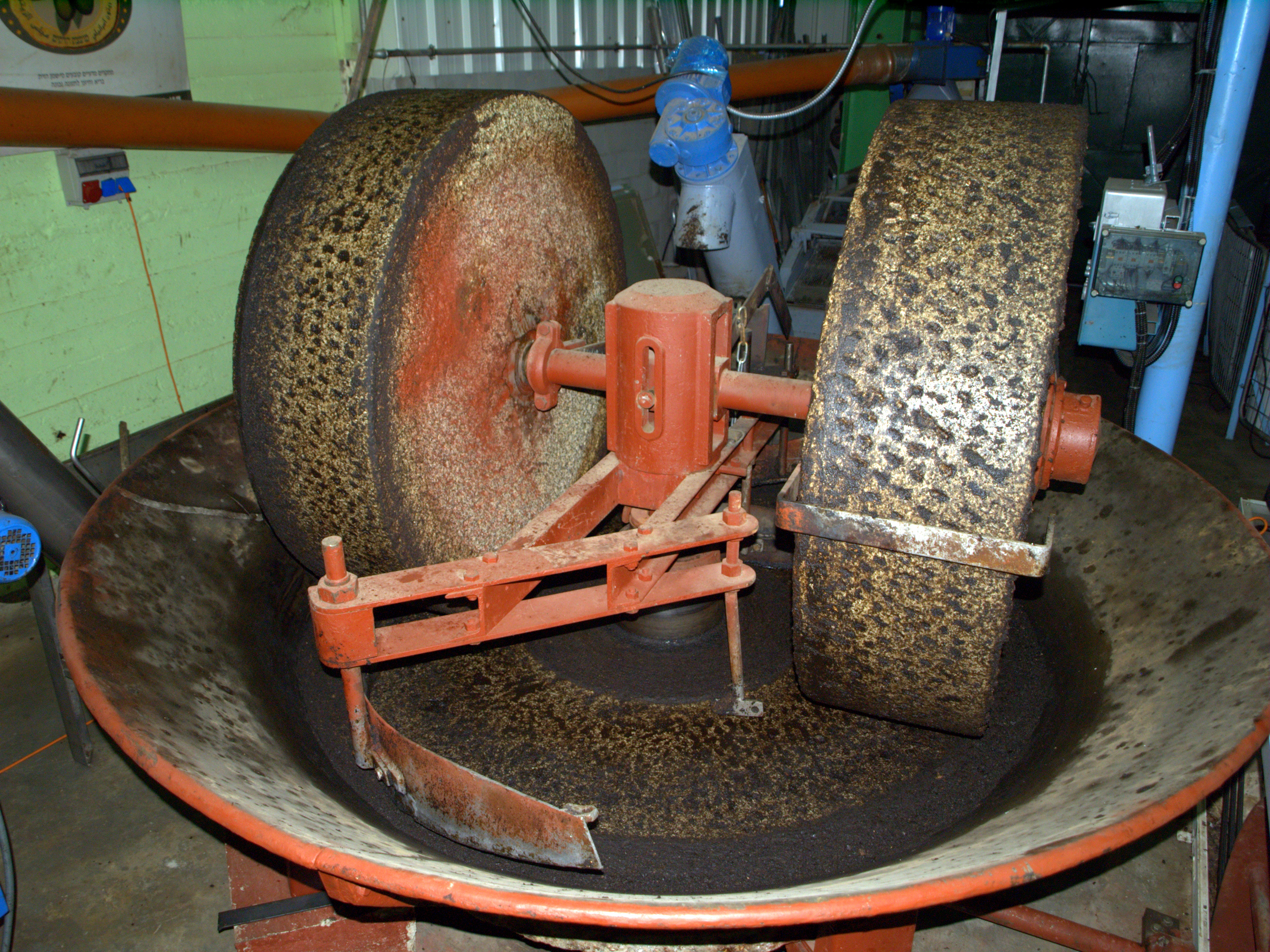|
Edenbridge Windmill
Edenbridge Mill is a Grade II listed house converted tower mill in Edenbridge, Kent, England. It is on the west side of Mill Hill, just north of the hospital. History ''Edenbridge Mill'' was built in 1815. A mill was marked on the 1858–72 and 1903-10 Ordnance Survey maps. There is a stone inscribed 1812 A Friend. there is a red brick just above the large window on the first floor with 1812 also inscribed William Ashby, the Westerham millwright worked on the mill in October 1825, fitting a new neck bearing of the windshaft, and did some repairs to the sails in January 1826. The cap was removed in 1937 and replaced by a flat roof. Description ''Edenbridge Mill'' is a five-storey brick tower mill with a domed cap. It had four sails carried on a cast iron Cast iron is a class of iron– carbon alloys with a carbon content more than 2%. Its usefulness derives from its relatively low melting temperature. The alloy constituents affect its color when fractured: white cast ... [...More Info...] [...Related Items...] OR: [Wikipedia] [Google] [Baidu] |
Tower Mill
A tower mill is a type of vertical windmill consisting of a brick or stone tower, on which sits a wooden 'cap' or roof, which can rotate to bring the sails into the wind.Medieval science, technology, and medicine: an encyclopedia (2005), 520 This rotating cap on a firm masonry base gave tower mills great advantages over earlier post mills, as they could stand much higher, bear larger sails, and thus afford greater reach into the wind. Windmills in general had been known to civilization for centuries, but the tower mill represented an improvement on traditional western-style windmills. The tower mill was an important source of power for Europe for nearly 600 years from 1300 to 1900, contributing to 25 percent of the industrial power of all wind machines before the advent of the steam engine and coal power. It represented a modification or a demonstration of improving and adapting technology that had been known by humans for ages. Although these types of mills were effectiv ... [...More Info...] [...Related Items...] OR: [Wikipedia] [Google] [Baidu] |
Windmill Sail
Windmills are powered by their sails. Sails are found in different designs, from primitive common sails to the advanced patent sails. Jib sails The jib sail is found in Mediterranean countries and consists of a simple triangle of cloth wound round a spar. The mill must be stopped in order to adjust the reefing of the sail. Though rare in the UK, at least two windmills are known to have had jib sails (St Mary's, Isle of Scilly and Cann Mills, Melbury Abbas). Image:Windmill Antimahia Kos.jpg, Jib sails Image:Sobreiro.jpg, More fully spread Image:Spanish Mill, St Mary's.jpg, St Mary's, Isles of Scilly File:Cann Mill, Melbury Abbas.jpg, Cann Mills, Melbury Abbas Common sails The common sail is the simplest form of sail. In medieval mills, the sailcloth was wound in and out of a ladder-type arrangement of sails. Medieval sails could be constructed with or without outer sailbars. Post-medieval mill sails have a lattice framework over which the sailcloth is spread. There are variou ... [...More Info...] [...Related Items...] OR: [Wikipedia] [Google] [Baidu] |
Grade II Listed Buildings In Kent
Grade most commonly refers to: * Grade (education), a measurement of a student's performance * Grade, the number of the year a student has reached in a given educational stage * Grade (slope), the steepness of a slope Grade or grading may also refer to: Music * Grade (music), a formally assessed level of profiency in a musical instrument * Grade (band), punk rock band * Grades (producer), British electronic dance music producer and DJ Science and technology Biology and medicine * Grading (tumors), a measure of the aggressiveness of a tumor in medicine * The Grading of Recommendations Assessment, Development and Evaluation (GRADE) approach * Evolutionary grade, a paraphyletic group of organisms Geology * Graded bedding, a description of the variation in grain size through a bed in a sedimentary rock * Metamorphic grade, an indicatation of the degree of metamorphism of rocks * Ore grade, a measure that describes the concentration of a valuable natural material in the surroun ... [...More Info...] [...Related Items...] OR: [Wikipedia] [Google] [Baidu] |
Tower Mills In The United Kingdom
A tower is a tall structure, taller than it is wide, often by a significant factor. Towers are distinguished from masts by their lack of guy-wires and are therefore, along with tall buildings, self-supporting structures. Towers are specifically distinguished from buildings in that they are built not to be habitable but to serve other functions using the height of the tower. For example, the height of a clock tower improves the visibility of the clock, and the height of a tower in a fortified building such as a castle increases the visibility of the surroundings for defensive purposes. Towers may also be built for observation, leisure, or telecommunication purposes. A tower can stand alone or be supported by adjacent buildings, or it may be a feature on top of a larger structure or building. Etymology Old English ''torr'' is from Latin ''turris'' via Old French ''tor''. The Latin term together with Greek τύρσις was loaned from a pre-Indo-European Mediterranean langua ... [...More Info...] [...Related Items...] OR: [Wikipedia] [Google] [Baidu] |
Grinding Mills In The United Kingdom
Grind is the cross-sectional shape of a blade. Grind, grinds, or grinding may also refer to: Grinding action * Grinding (abrasive cutting), a method of crafting * Grinding (dance), suggestive club dancing * Grinding (video gaming), repetitive and uninteresting gameplay * Bruxism, grinding of the teeth * Grind (sport), a sliding stance usually performed in extreme sports such as aggressive skating and boardsports; Grinds (skateboarding) * Grind (whaling), pilot whale hunting in the Faroe Islands * Grinds, private tutoring, in Ireland * Mill (grinding) * Grinding, the operation of the winches on a yacht; the work done by a grinder (sailing position) Geography * Grind, a village in Lăpugiu de Jos Commune, Hunedoara County, Romania * Grind (Unirea), a tributary of the Unirea in Cluj and Alba Counties, Romania Film and TV * ''Grind'' (2003 film), about amateur skaters * ''The Grind'' (1915 film), a silent movie * ''Grind'' (1997 film), starring Billy Crudup and Adrienne Shel ... [...More Info...] [...Related Items...] OR: [Wikipedia] [Google] [Baidu] |
Windmills In Kent
A windmill is a structure that converts wind power into rotational energy using vanes called sails or blades, specifically to mill grain (gristmills), but the term is also extended to windpumps, wind turbines, and other applications, in some parts of the English speaking world. The term wind engine is sometimes used to describe such devices. Windmills were used throughout the high medieval and early modern periods; the horizontal or panemone windmill first appeared in Persia during the 9th century, and the vertical windmill first appeared in northwestern Europe in the 12th century. Regarded as an icon of Dutch culture, there are approximately 1,000 windmills in the Netherlands today. Forerunners Wind-powered machines may have been known earlier, but there is no clear evidence of windmills before the 9th century. Hero of Alexandria (Heron) in first-century Roman Egypt described what appears to be a wind-driven wheel to power a machine.Dietrich Lohrmann, "Von der östlichen ... [...More Info...] [...Related Items...] OR: [Wikipedia] [Google] [Baidu] |
Building Regulations In The United Kingdom
Building regulations in the United Kingdom are statutory instruments or statutory regulations that seek to ensure that the policies set out in the relevant legislation are carried out. Building regulations approval is required for most building work in the UK. Building regulations that apply across England and Wales are set out in the Building Act 1984 while those that apply across Scotland are set out in the Building (Scotland) Act 2003. The Act in England and Wales permits detailed regulations to be made by the Secretary of State. The regulations made under the Act have been periodically updated, rewritten or consolidated, with the latest and current version being the Building Regulations 2010. The UK Government (at Westminster) is responsible for the relevant legislation and administration in England, the Welsh Government (at Cardiff) is the responsible body in Wales, the Scottish Government (at Edinburgh) is responsible for the issue in Scotland, and the Northern Ireland Execu ... [...More Info...] [...Related Items...] OR: [Wikipedia] [Google] [Baidu] |
Millstone
Millstones or mill stones are stones used in gristmills, for grinding wheat or other grains. They are sometimes referred to as grindstones or grinding stones. Millstones come in pairs: a convex stationary base known as the ''bedstone'' and a concave ''runner stone'' that rotates. The movement of the runner on top of the bedstone creates a "scissoring" action that grinds grain trapped between the stones. Millstones are constructed so that their shape and configuration help to channel ground flour to the outer edges of the mechanism for collection. The runner stone is supported by a cross-shaped metal piece (millrind or rynd) fixed to a "mace head" topping the main shaft or spindle leading to the driving mechanism of the mill (wind, water (including tide) or other means). History The earliest evidence for stones used to grind food is found in northern Australia, at the Madjedbebe rock shelter in Arnhem Land, dating back around 60,000 years. Grinding stones or grindston ... [...More Info...] [...Related Items...] OR: [Wikipedia] [Google] [Baidu] |
Cast Iron
Cast iron is a class of iron–carbon alloys with a carbon content more than 2%. Its usefulness derives from its relatively low melting temperature. The alloy constituents affect its color when fractured: white cast iron has carbide impurities which allow cracks to pass straight through, grey cast iron has graphite flakes which deflect a passing crack and initiate countless new cracks as the material breaks, and ductile cast iron has spherical graphite "nodules" which stop the crack from further progressing. Carbon (C), ranging from 1.8 to 4 wt%, and silicon (Si), 1–3 wt%, are the main alloying elements of cast iron. Iron alloys with lower carbon content are known as steel. Cast iron tends to be brittle, except for malleable cast irons. With its relatively low melting point, good fluidity, castability, excellent machinability, resistance to deformation and wear resistance, cast irons have become an engineering material with a wide range of applications and are ... [...More Info...] [...Related Items...] OR: [Wikipedia] [Google] [Baidu] |
Millwright
A millwright is a craftsperson or skilled tradesperson who installs, dismantles, maintains, repairs, reassembles, and moves machinery in factories, power plants, and construction sites. The term ''millwright'' (also known as ''industrial mechanic'') is mainly used in the United States, Canada and South Africa to describe members belonging to a particular trade. Other countries use different terms to describe tradesmen engaging in similar activities. Related but distinct crafts include machinists, mechanics and mechanical fitters . As the name suggests, the original function of a millwright was the construction of flour mills, sawmills, paper mills and fulling mills powered by water or wind, made mostly of wood with a limited number of metal parts. Since the use of these structures originates in antiquity, millwrighting could arguably be considered one of the oldest engineering trades and the forerunner of modern mechanical engineering. In modern usage, a millwright is engaged ... [...More Info...] [...Related Items...] OR: [Wikipedia] [Google] [Baidu] |
Windmill Fantail
A fantail is a small windmill mounted at right angles to the sails, at the rear of the windmill, and which turns the cap automatically to bring it into the wind. The fantail was patented in 1745 by Edmund Lee, a blacksmith working at Brockmill Forge near Wigan, England, and was perfected on mills around Leeds and Hull towards the end of the 18th century. Fantails are found on all types of traditional windmills and are especially useful where changes in wind direction are frequent. They are more common in England, Denmark and Germany than in other parts of Europe, and are little-known on windmills elsewhere except where English millwrighting traditions were in evidence. The rotating fantail turns the cap of the windmill via a system of gearing to a toothed rack around the top of the mill tower, or to wheels running on the ground in the case of a post mill The post mill is the earliest type of European windmill. Its defining feature is that the whole body of the mill that houses ... [...More Info...] [...Related Items...] OR: [Wikipedia] [Google] [Baidu] |
Westerham
Westerham is a town and civil parish in the Sevenoaks District of Kent, England. It is located 3.4 miles east of Oxted and 6 miles west of Sevenoaks, adjacent to the Kent border with both Greater London and Surrey. It is recorded as early as the 9th century, and was mentioned in the Domesday Book in a Norman form, ''Oistreham'' (compare Ouistreham in Normandy, ''Oistreham'' in 1086). ''Hām'' is Old English for a village or homestead, and so Westerham means a ''westerly homestead''. The River Darent flows through the town, and formerly powered three watermills. Electoral Area Westerham Hill, Berry's Green, Luxted, Single Street, Cudham, Downe, and Leaves Green combined form the Darwin (ward), Greater London's largest electoral Ward. History There is evidence that the area around Westerham has been settled for thousands of years: finds such as a Celtic fortification (c 2000 BC) and a Roman road are close by, along with the remains of a Roman encampment just past the ruin ... [...More Info...] [...Related Items...] OR: [Wikipedia] [Google] [Baidu] |





